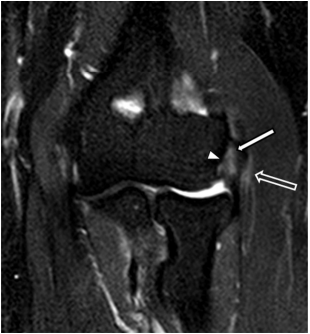Objective: The aim of this study was to determine the inter- and intra-observer reliabilities of magnetic resonance imaging (MRI) for the diagnosis of lateral epicondylitis, to examine whether degree of common extensor tendon (CET) injury is related to other elbow abnormalities on MRI, and to investigate the correlation between elbow abnormalities on MRI and patients' symptoms.
Methods: Fifty-one patients (32 women and 19 men; mean age: 50 years (range, 22e63)) with a diagnosis of lateral epicondylitis were included in the study. The average duration of symptoms was 2.3 years. MRI scoring system was used to grade the CET injuries and associated injuries in the elbow joint. Three independent radiologists retrospectively reviewed MRI images. Inter- and intra-observer reliabilities for diagnosing lateral epicondylitis were calculated using kappa statistics, and Spearman's rank correlation analysis was used to analyze relationships between degree of CET injury and the associated abnormalities of elbow joints. Statistical relations were considered significant for p values of <0.05. In addition, using Spearman's rank correlation analysis, CET injuries and associated abnormalities of elbow joints were correlated with clinical symptoms using visual analog scale pain scores.
Results: Various degrees of CET injuries were found in total of 51 patients. Radial collateral ligament and lateral ulnar collateral ligament (RCL/LCL) was the most common accompanying elbow abnormality other than CET injuries. Inter- and intra-observer agreements of CET and RCL/LUCL injuries on MRI were excellent. There were significant correlation between degrees of CET and RCL/LUCL injuries (correlation coefficient r ¼ 0.667, p < 0.01) and between degree of RCL/LUCL injuries and visual analog 11-point pain box scale (VAS) scores (correlation coefficient r ¼ 0.478, p ¼ 0.033).
Conclusion: MRI showed excellent inter- and intra-observer reliabilities for the evaluation of lateral epicondylitis. In addition to common extensor tendinopathy, RCL/LUCL abnormality was the most common accompanying finding and degree of RCL/LUCL injuries positively correlated with degree of CET injuries. Furthermore, degree of RCL/LUCL injuries positively correlates with severity of pain.
Level of evidence: Level IV, Diagnostic study.



.png)
.png)

